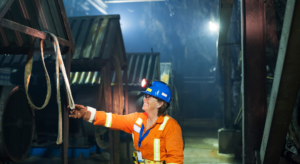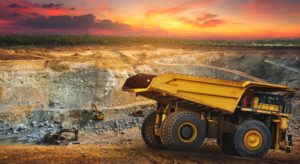Mining operations around the world face a common challenge today i.e. making a balance between increased demands of energy and sustainability goals. Compressed air energy storage (CAES) has emerged as a game-changing solution in transforming underground mining spaces into powerful energy reservoirs. The idea is a sound one since air is compressed and kept in underground caverns during off-peak periods which is then released through turbines to produce electricity readily during peak times. This paradigm shift enables mining companies to increase their energy efficiency, cut down the operational expenditures, and also supports their growth of clean energy adoption.
The idea itself is not that novel, but the implementation of the idea in mining practices has recently increased significantly. This is because companies tend to look for alternatives to conventional energy storage. This article therefore examines three core areas of application of CAES in mining: infrastructure and system requirements, operational advantages and performance, and directions of future technologies that facilitate the application of compressed air energy storage in mining.
Compressed Air Energy Storage in Mining: Infrastructure and System Requirements
The base of CAES is the physical structure and technical requirements. So, these should be well understood to make the mining energy storage feasible to implement. Let us explore this ahead in this section:
Geological Considerations
Underground storage for compressed air energy storage is dependent on certain geological conditions to guarantee safety and efficiency. Furthermore, major influencing factors are rock porosity, structural stability, and cavern size. In addition, the optimal storage space needs to be airtight, stable, and, most importantly, resistant to repeat compression cycles. Additionally, natural caverns or old mine shafts need rigorous geological characterization. It includes stress tests and permeability tests. This confirms their compliance for air storage purposes.
Equipment and Components
A CAES system is complete when a series of specialized components work in harmony. Furthermore, the main equipment includes:
– Industrial-grade air compressors,
– Heat exchangers for compression heat,
– Turbines for power generation,
– Monitoring systems, etc.
The compressor system must be appropriately sized to match the energy demands of the mining operation and the turbines must be sized to meet the anticipated power output demands. Additionally, advanced control systems integrate these components for optimal performance.
Installation Process
The CAES system installations are made according to a predefined set of operations. It encompasses preparation of the cavern, installation of the equipment, and interconnecting the systems. In addition, this process requires specialized engineering skills. It ensures proper sealing of the storage compartments, installation of the pressure measurement devices, and their connection to the existing electrical network. Moreover, there is a necessity to install safety systems and emergency protocols in the course of installation to ensure there is security during operations.
Safety Systems
Comprehensive safety measures are in need for compressed air energy storage operations in mining areas. It includes continuous pressure monitoring, emergency shutdown systems, and scheduled structural integrity tests. Moreover, sophisticated sensors measure the levels of air quality, temperature, and pressure in the system. So, safety procedures should consider areas of risk including air leaks, over-pressurization, and equipment malfunction. Routine staff training can also guarantee the correct functionality of the system and preparedness for emergency response.
Compressed Air Energy Storage in Mining: Operational Benefits and Performance
The application of CAES has many benefits to mining activities. These essentially change the paradigm of energy management and utilization. So, let us dive deeper into the benefits that mining energy storage provides:
Energy Cost Reduction
CAES systems enable significant cost savings through strategic energy management. Furthermore, compressed air generation operations can be used to produce power during off-peak times when electricity rates are cheaper and, in so doing, operate at peak times when electricity rates are more costly. So, this load-shifting ability allows mining companies to improve their energy costs. Moreover, additional savings are realized through reduced transmission losses and decreased use of costly backup power systems. This is one of the major benefits of compressed air energy storage in mining.
System Efficiency
The modern compressed air energy storage systems are highly efficient due to the advancement in design and optimization. Furthermore, heat recovery systems are incorporated to collect and subsequently use compression heat. This helps in a better efficiency of the overall system. Moreover, smart control systems enable a timely compression and generation of power depending on operational needs and energy costs. The application of these systems, however, is complemented by routine servicing and supervision to maintain the effective functioning of the entire system.
Reliability and Maintenance
CAES systems demonstrate exceptional reliability in mining environments. Due to the mechanical nature of technology, it is very robust and less prone to deterioration than chemical storage options. Furthermore, maintenance requirements focus on regular equipment inspections, component lubrication, and performance monitoring. So, the long-term stability and endurance of the system give it the potential for use for large-scale energy storage purposes.
Environmental Impact
The environmental advantages of CAES are lower carbon and minimal ecological footprint. Integration of renewable generation sources can be enhanced by the system’s delivery of dependable storage capacity. Moreover, in contrast to battery storage, compressed air energy storage end-of-life has a negligible environmental footprint at the end of life. The technology also enables mining operations to comply with environmental requirements and sustainability objectives. This is while maintaining operational efficiency.
Also read: Recap & Insights: 6th Mining 4.0 Summit
Compressed Air Energy Storage in Mining: Innovation and Future Development
Technological development in CAES technology continues to yield fresh opportunities and advances for the mining industry. So, let us see some of the advances in the area of mining energy storage:
Advanced Control Technologies
Modern CAES systems incorporate sophisticated digital controls and automation. Furthermore, artificial intelligence and machine learning algorithms can condition system performance across operational regimes and predict energy demand. Moreover, the sensors in real-time monitoring systems are delivering a high level of performance data and predictive maintenance warnings. So, these smart controls improve system performance and reliability while dropping operational costs.
Integration Capabilities
CAES systems show great integration capability with multiple energy sources and energy storage technology. Furthermore, modern installations can be seamlessly integrated with solar, wind, and other renewable forms of energy. Additionally, hybrid systems combining CAES with battery storage or hydrogen production offer enhanced flexibility and reliability. So, this integration potential of compressed air energy storage enables a wide range of uses for sophisticated mining operations.
Scalability Options
The scalability of CAES technology enables it to be adapted flexibly to operational requirements. Systems can be extended modularly as the mining operation expands or the energy requirement grows. So, this scalability allows mining companies to control investment costs while retaining the freedom to expand later. Additionally, one of the best sustainable energy solutions for the mining industry is easily tailored to changing operational needs and energy requirements.
Economic Advantages
CAES systems provide attractive economic advantages in addition to conventional energy storage. The technology provides opportunities for revenue through grid services and demand response programs. Moreover, long-term operational lifetimes and relatively cheap maintenance lead to a good return on investment. So, the potential for energy minimization and integration of renewables enhances the system’s economic attractiveness.
To Sum Up
The integration of compressed air energy storage in mining shows a great leap in the sustainable management of energy. This is a technology that not only addresses the current challenges but also positions the mining operations for a more efficient future. As the industry evolves, CAES will continue to stand out as a reliable and environmentally responsible solution for energy storage needs. For more profound perspectives on CAES and other energy innovations, join industry leaders at the 6th Decarbonized Mines Summit in Toronto, Canada on January 15-16, 2025. It will be filled with in-depth sessions, panel discussions, case studies, and more giving you an edge over the competitors. So, register right away!





